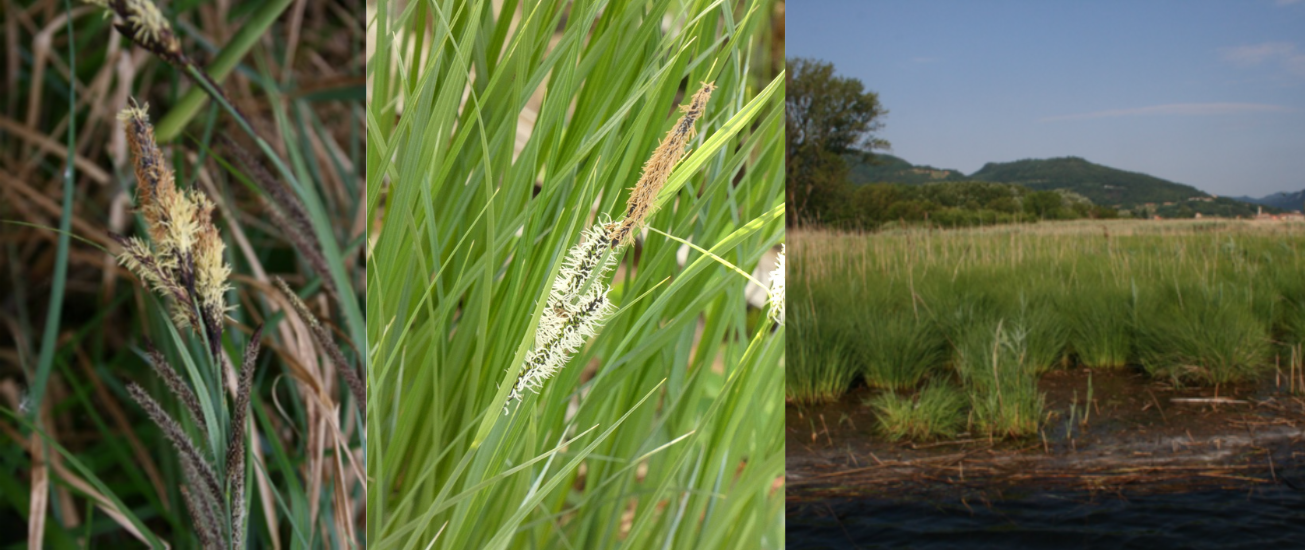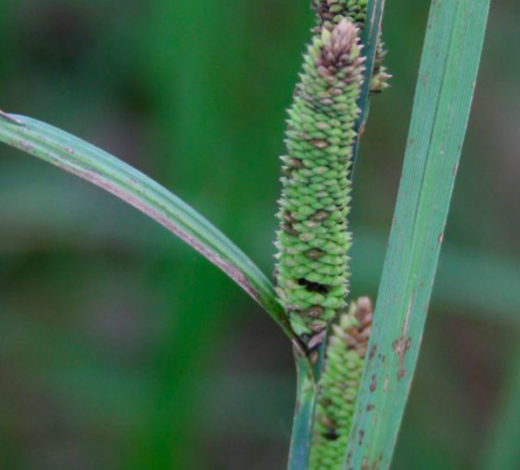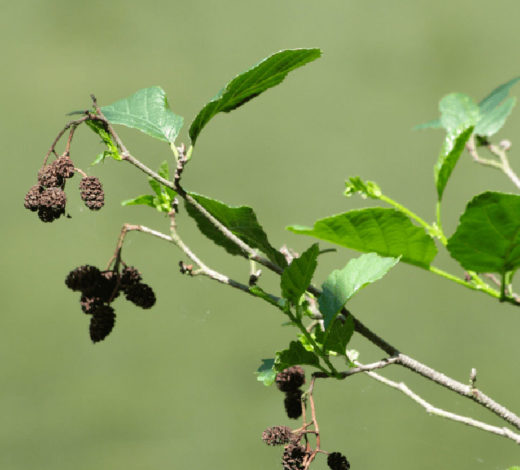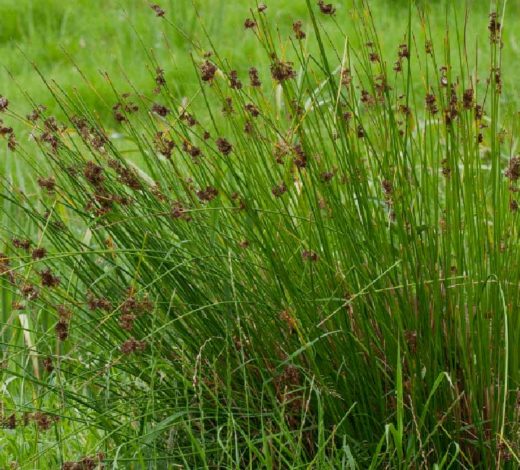Tufted Sedge
(Carex elata)
This is a grassy perennial plant with a size ranging from 30 to 100 cm in height.
Family
Cyperaceae
Description
This is a grassy perennial plant with a size ranging from 30 to 100 cm in height. Its characteristic shape features strong, cylindrical, dense heads with a length of up to one metre and its roots are generally immersed in the water. The leaves are as long as the stems and narrow, with sharp, curved edges and a bright green colour. The above-ground stem, with a triangular cross section (typical of sedges), supports the inflorescence with male flowers at the tip and female flowers below. Flowering period: April–May.
Habitat
It primarily grows along the banks of canals and ponds. In the Reserve, it forms dense tufts (caespitose) that risk disappearing with the advance of marsh reeds.
Uses
In the past, it was used in some Northern European regions to cover roofs or as straw for animals. Farmers used the leaves for wicker chairs, mats, and wrapping wine bottles.
Etymology
The genus name derives from the Greek ‘keìro’ (to cut) due to the sharp leaf margins of some species. The species name, which means ‘high’ in Latin, alludes to the large size of the plant.
Observation
Tufts of Carex elata are a characteristic element of notable conservation importance in the vegetation of the ‘Lamette’. Although it is not an easy species to identify, the tufted appearance and flooded habitat help in this respect.




